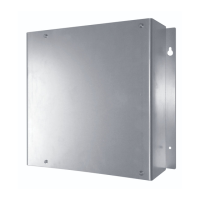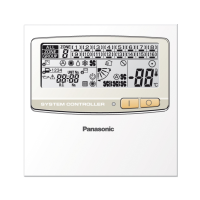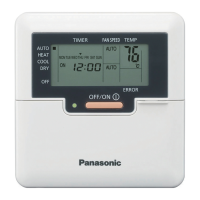220
Appendix
Appendix
Methodology for calculating distributions
Outdoor units
Adaptor
Intelligent Controller
Calculation
Electricity T2
Gas TG
Gas for generation PG
Standby power TS
Electricity with energy saving
considered
T3
Gas with energy saving considered TG3
Night time electricity for ice thermal
storage
TCnight
High pressure saturate temperature HPS
Count
Number of electricity pulses Pc
Number of gas pulses Gc
Flow of measured values and settings
Flow of calculated values
Calculation
Super heat SH = f (E3, E1)
Sub cool SC = f (HPS, E1)
Operational performance rate D = f (SH, SC)
Fans speed conversion value FI = f (WS)
Calculation
Electricity
PIA = f (PS, T2, PINp, PINg)
PIA’ = f (PIA, TS, PS, W, H, R, B)
Gas PGA = f (GIN, TG, PG)
Calculation
Electricity distribution rate RPI = f (PIA’)
Gas distribution ratio RGI = f (PGA)
Setting
Heater capacity H
Value added for fan current B
Calculation
Elements related to ice thermal
storage
ICE = f (TCnight, RPI)
Pice = f (Pc, @e)
Calculation
Amount of electricity used PI = f (RPI, Pc, @e, ICE, Pice)
Amount of gas used GI = f (RGI, Gc, @g)
Work performance
capacity
Electricity
PINp = f (D, FI, PS)
PINg = f (0)
Gas GIN = f (D, FI, PS)
Setting
Volume of pulse units
Electricity @e
Gas @g
Calculation
Operating times according to fan
speed
R
ON hours for heater W
Indoor performance PS
Energy recovery inlet and outlet
temperatures
E1, E2,
E3
Actual fan speed WS
Indoor units
Calculations for load distribution
Load distribution is calculated according to the following ow.
Note
y “f” indicates a function calculation.
For example, “Operational performance rate D=f (SH, SC)” means that the operational performance rate is calculated using “Super heat SH”
and “Sub cool SC”.

